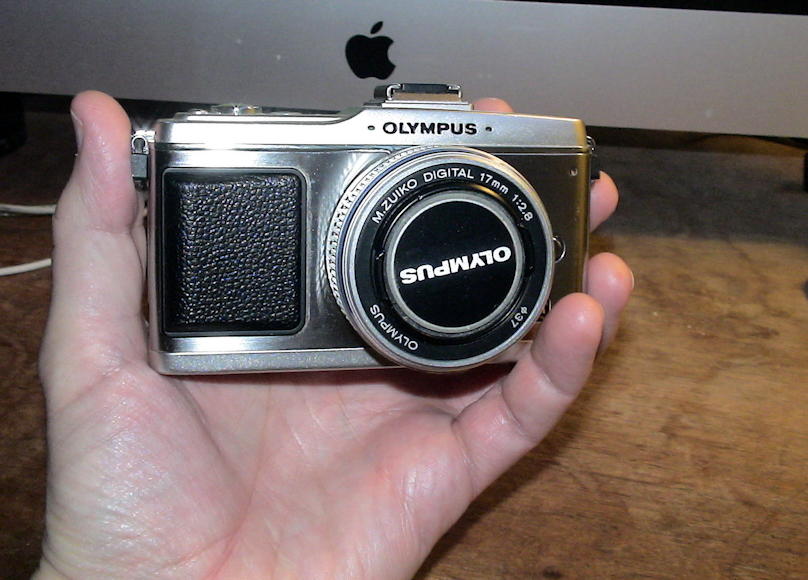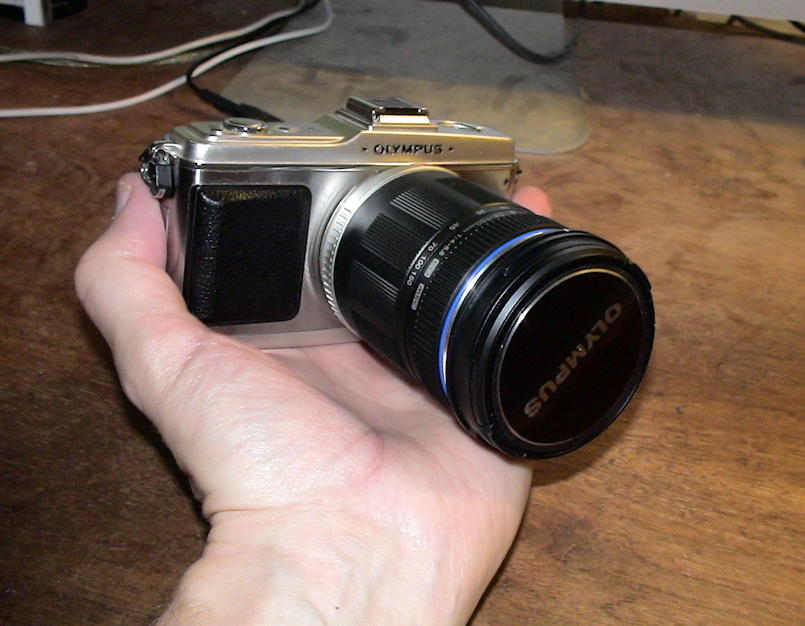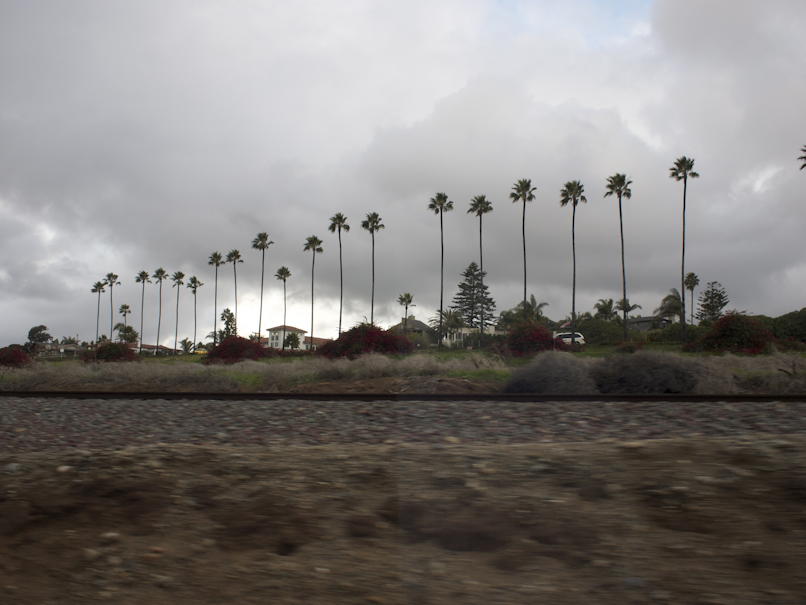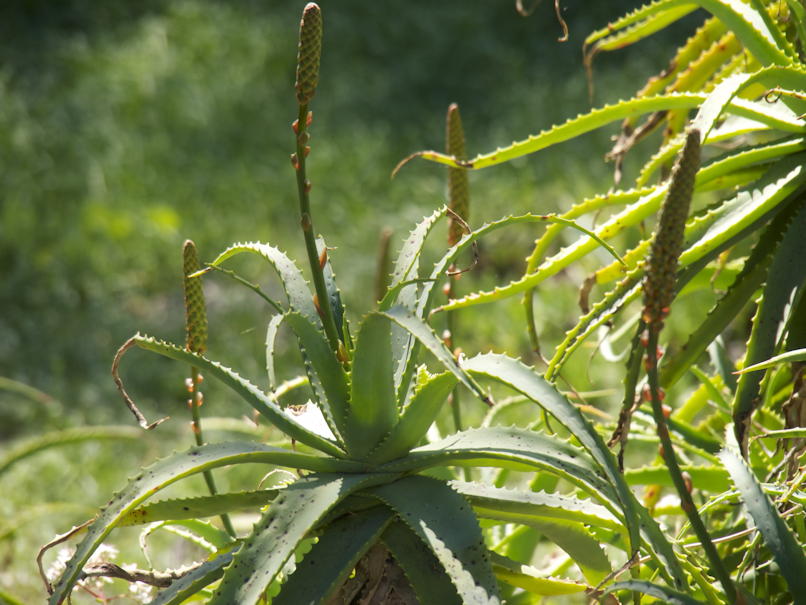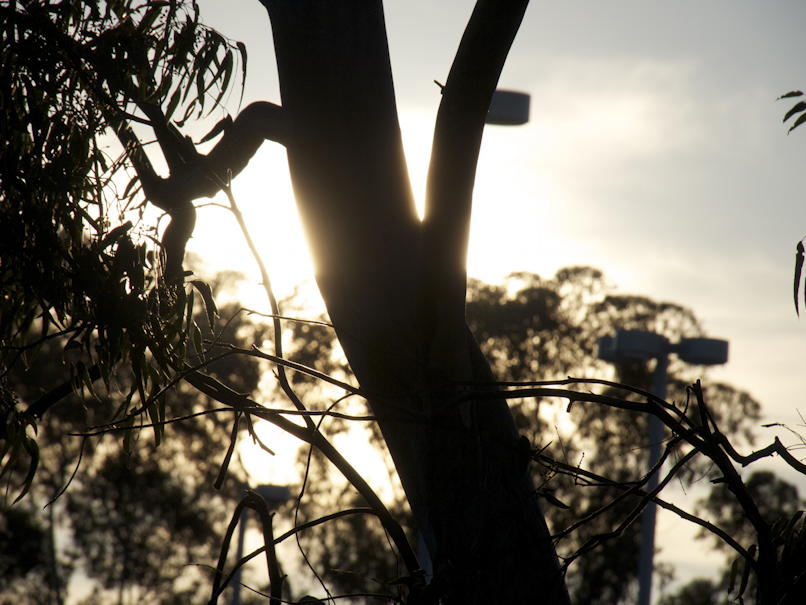Olympus Pen E-P2 with 17mm and 14-150mm lenses
About a year and a half ago, I replaced my Sony DCR PC-330• with an Olympus Pen E-P2•. The Sony was (and still is) a great video recorder, but it’s outdated as a stills camera1; further, while compact, the PC-330 was just a bit too big for me to carry around regularly.
I chose the Pen because it was getting great reviews and I love the form factor. From the front it looks like a classic camera. I chose the kit with the 17mm pancake lens because that really makes for a small footprint. I can carry this camera in my pocket—barely, but I can and have done it. Also, I knew that when I got a zoom lens I would want a bit more than the 14-42 lens that comes with the zoom kit version. I considered just getting a naked kit without any lens, and maybe getting the 25mm lens, but the kits come with savings, and the 17mm lens• also got good reviews—it was something people gladly bought on its own. It’s supposed to be similar to what you get on a 35mm camera.
The Pen is a great quick-use camera. Most of the time I leave it on AUTO and let it detect where the focus is, how much exposure is needed, and everything else. When I need to manually focus, it zooms in on whatever the camera is pointed at, to make it easier to manually focus.
For all that it’s easy to use, this is not a buy, point, and shoot. There is no digital zoom. If you want to digitally zoom an image, you’ll do so afterwards in your image editor. The only zoom you have on the camera is from the lenses you buy for it.
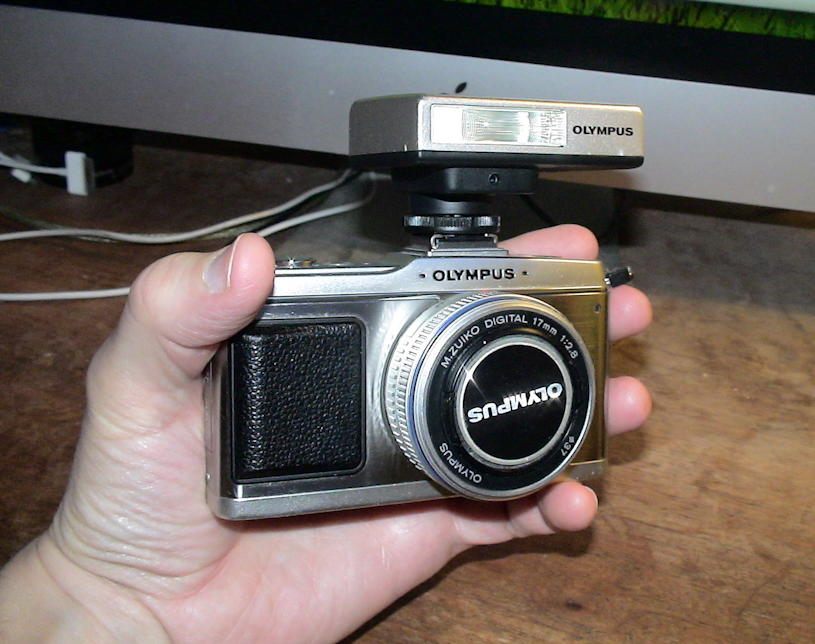
A good flash is nice to have if you shoot in dark places, but even without the flash, the camera shoots very well indoors.
There is no built-in flash. I recently purchased the FL-14 flash attachment• because I’ve been doing more indoor shooting in poor lighting recently (a writers conference, a fantasy convention, and a bloggers conference). I haven’t needed a flash that much, however—the camera takes decent photos even in a bar’s stage lighting. It won’t take decent photos looking away from the stage, however—that’s too dark.
The FL-14 looks just as classic as the camera itself, and works as well as an integrated flash would: it and its brightness is fully controlled by the camera. The attachment comes with a small pouch that makes it easier to carry separately from the camera.
There’s one other accessory that you must get: unlike other cameras, that come with a memory card so small you immediately throw it out and get a bigger one, the Olympus doesn’t come with any card. And it needs a card to store any photos. So when you order it, you’ll want to also order a card. I recommend a fast, high-capacity card. This will let you use the camera to its fullest potential by keeping the images in RAW format. I’m currently using the Transcend 32-GB class 10 card•2, and it holds about 2,200 raw 4032x3024 pixel images. That’s been more than enough even for a two-week vacation where my passenger was taking regular photos out of the car window!
Other accessories include an electronic viewfinder and several other micro four-thirds lenses. I haven’t yet had a need for the viewfinder; it would go in the place of the flash, which makes some sense as the viewfinder shouldn’t be needed in situations where the flash is needed. However, even under bright sunlight the LCD display is fine; it’s a bit washed out, but visible enough to know whether the camera’s focused or not.3
There are a lot of options in the camera; you’ll need to read the manual and look for the adjustments you need (downloading the PDF manual will make searches easier). There are a ton of options I’ve never used. You can even do minor touch-ups within the camera.
One of the nicer features of it is that when in manual shooting mode, it will take photos for as long as you hold down the shutter button, until it runs out of memory. This is great for catching action shots. Shooting in RAW mode, I can get nine shots in about three seconds.4 If you want that feature while still being able to take advantage of auto-focus, you can assign autofocus to one of the special function buttons. You can also create two profiles, they call them “My Mode 1” and “My Mode 2”, for remembering settings. I did this and have long since forgotten what the two modes were for. The camera works fine without switching between the two modes, so “it must not have been very important then”.
When setting some of the odder options, there is a special menu that’s normally hidden. You need to go into the tools menu, turn the menu display on, and then a new gears menu will show up that you “rarely need to use” (and in fact, I at least rarely do).
I’ve only run into one real drawback with the Pen: it can only get power from the battery. There is no AC adapter for it. This means that you can’t use it for things that take a long time, such as long-term time-lapse photography. Under normal use, the battery lasts for a long time—I’ve gone for a week without recharging it.5 But turning it on and keeping it on to take a photo every minute and the battery will die in about two hours.
The camera comes with software which can be used for managing photos; I have never used it for that because I use iPhoto. But you’ll want to start it up every few months to ensure you’ve got the up-to-date firmware.
If you’re looking for a compact camera for very high quality images and the option to use multiple lenses—and with a bit of old-school style built in—the Pen is a great choice.
The 14-150mm lens
After a little over a year of doing fine with the 17mm pancake, I decided that this camera was cool enough to spend more money on. I’d been eyeing the 14-150mm lens• for a while, so I bit the bullet and spent the money—almost as much as for the camera itself. At Comic-Con I often end up too far back to get good photos for popular artists; I don’t think I’ve ever gotten a good photo of Ray Bradbury. That’s to be expected at something as large as Comic-Con, but I ended up not being able to get good photos at the much smaller World Fantasy Con in October.
So for places where I’m willing to carry around a little extra junk, a zoom lens would be useful. The 14-150 is a nice general-purpose zoom. It isn’t as huge as the 75-300, it’s more versatile at close ranges, and it’s more reasonably priced. I’m probably not going to be taking pictures of the moon with it, and I have seen people using their 300s to do that, but that’s getting a bit beyond what I’m using this camera for. And on the other hand, it’s a better zoom than the other option for a kit lens, the 14-42. It’s a great companion to the 17mm.
I’ll have a couple of sample photos in a few days.
- January 5, 2012: Olympus Pen 17mm and 14-150mm sample photos
-
Here are some sample photos taken from the Olympus Pen E-P2•. Click on any image to embiggen; I take the photos at 4032x3024, but here I’ve dropped them down to 2688x2016 to keep the file sizes under a megabyte at high quality.
These two photos were both taken with the 17mm lens•. The breakfast photo was from about a foot away; the 17mm lens can theoretically take photos from .67 feet. The line of palms was taken from a moving car (by a passenger!) at about 35-45 miles per hour on the Pacific Coast Highway.
The next four photos were taken with the 14-150mm lens•. The aloe plant was about ten feet away, as was the tree.
Not so outdated: I used it to take the photos of the Olympus for this review, since the Pen couldn’t take photos of itself.
↑I’m pretty sure it only utilizes up to speed class 6; the manual doesn’t say.
↑Perhaps when I’m older this will change.
↑And, something I only just now discovered because I tested how many photos it will take before having to pause to finish writing to the card, I can select multiple photographs and delete them all at once.
↑Not that I’d recommend it. I did that because I forgot the charger when I went on a vacation.
↑
- Olympus 17mm f/2.8 Lens•
- “This wide-angle pancake lens has a convenient focal length for shooting everything from landscapes and portraits to close ups.” I have absolutely find this to be true. I used this as the sole lens for my camera for over a year.
- Olympus ED 14-150mm f/4.0-5.6 lens•
- This zoom lens for the micro four-thirds system is easy to use and works well for closeups and long-range shots. When you’re willing to put a larger lens on your smaller camera, this makes a good general-purpose zoom.
- Olympus FL-14 Flash•
- This flash works with the E-P2, E-P1, and probably the rest of the Pen E series as well.
- Olympus Pen E-P2•
- The Olympus Pen E-P2 is a 12.3 megapixel camera that accepts micro four-thirds lenses; this kit comes with the 17mm pancake lens to make a very compact high quality camera.
- Transcend 32 GB Class SDHC 10 Flash Memory Card•
- At 32 gigabytes, you can take a lot of high quality raw images, and speed class 10 means (if your camera can accept it) it will take them pretty quickly, too.

